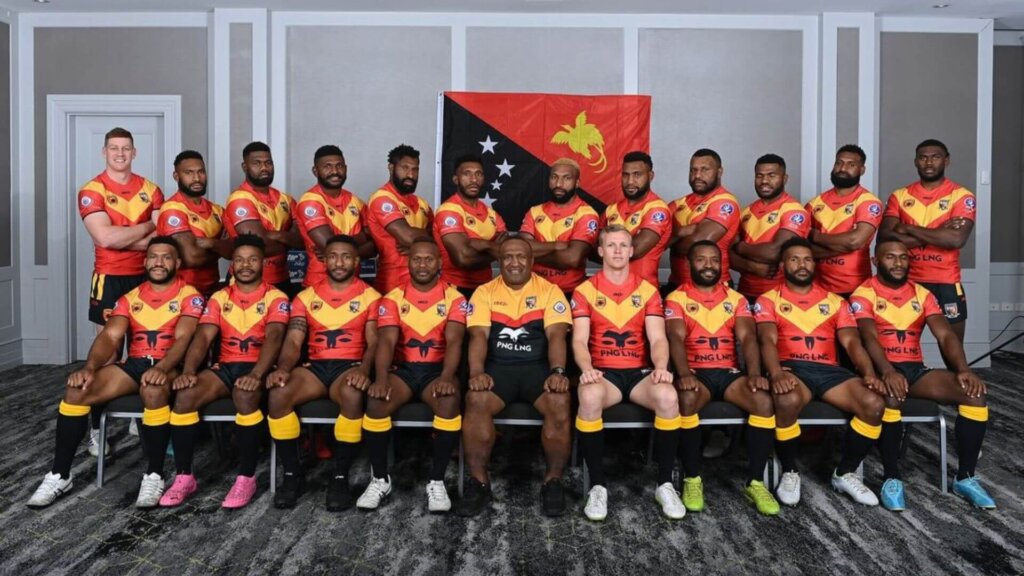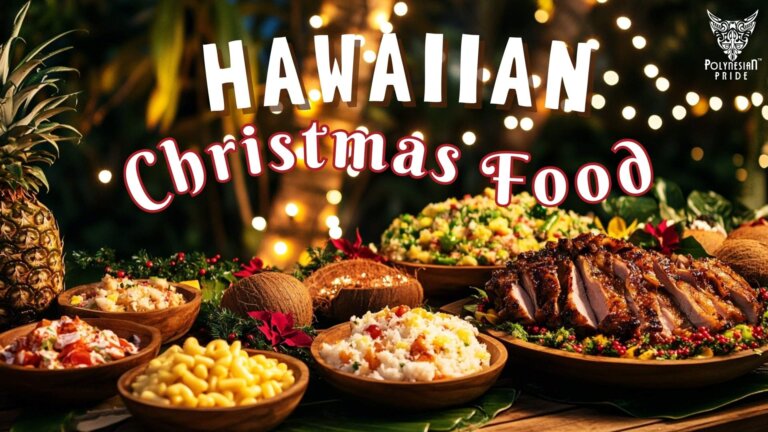11 Fascinating Facts About Papua New Guinea Culture

INTRODUCTION
Papua New Guinea, an island nation in the southwestern Pacific Ocean, is a cultural treasure trove. With its stunning natural landscapes and rich cultural heritage, this country offers a glimpse into a world where ancient traditions and modernity coexist. Let’s explore thirteen fascinating facts about Papua New Guinea culture that showcase its incredible diversity and unique heritage.
01. Facts About Papua New Guinea Culture: The Only Country That Has 7000 Cultures
Papua New Guinea is a cultural marvel, boasting over 7,000 distinct cultural groups, each with its own language and traditions. This diversity creates a rich tapestry of art, dance, weaponry, costumes, music, and architecture. Traditional rituals for life events such as death, feasts, marriages, and initiations keep the vibrant arts and culture scene alive.
Unique cultural elements include tree kangaroos, bilum bags, haus tambarans, and singsings. In the Highlands, men sport long beards, and women use colorful string bags, while the Sepik region is renowned for its elaborate spirit houses and carvings. Papua New Guinea’s cultural diversity is a testament to its rich heritage and vibrant traditions.

02. More than 800 languages in Papua New Guinea
Papua New Guinea, a sovereign state in Oceania, is the most linguistically diverse country in the world. With 839 living languages spoken, it is a true linguistic mosaic and represents a diversity of heritage facts about Papua New Guinea culture.
Common Languages in Papua New Guinea
English: As the official language, English is used in government, courts, and education, and plays a crucial role in formal communications.
Tok Pisin: This English-based creole is the lingua franca widely spoken nationwide. Its use varies in certain provinces like Western, Gulf, Central, Oro, and Milne Bay, especially among older generations. Tok Pisin also incorporates some German vocabulary due to historical influences.
Hiri Motu: Also known as Police Motu or Pidgin Motu, this simplified version of the Motu language acts as a bridge language in various regions.
Papua New Guinean Sign Language (PNGSL): is the standardized sign language of Papua New Guinea. It was officially recognized as one of the country’s official languages in 2015, highlighting its commitment to inclusivity.

03. Papua New Guinea has over 600 Different Tribes
One of the famous facts about Papua New Guinea’s culture is that this nation boasts incredible cultural diversity with over 600 distinct tribes, each with unique customs and traditions. Here are some of the most famous tribes:
The Baining People
The Baining people, from East New Britain Province, are renowned for their nocturnal fire dance ceremonies. The widespread awareness of this traditional dance is among the many facts about Papua New Guinea culture. Dancers wear elaborate masks and perform barefoot over glowing embers, showcasing their spiritual connection and resilience.
Chambri Tribe
Living around the Chambri Lakes in East Sepik Province, the Chambri Tribe is known for intricate wood carvings and woven artifacts depicting animals and mythical beings. These creations symbolize their connection to the environment and ancestral spirits.

The Asaro Tribe
The Asaro Tribe, from the Eastern Highlands Province, is famous for its eerie Mudmen performances. Legend has it they used frightening clay masks and mud-covered bodies to scare off enemies. Today, these performances are a highlight at festivals like the Goroka Show.
The Huli Tribe
The Huli Tribe, which lives in Hela Province, is recognized for its elaborate wigs and face paint. Known for their warrior culture and horticulture, the Huli wear bright ochre face paint and intricate headdresses to signify masculinity and bravery.
The Orokaiva Tribe
The Orokaiva people, from Oro Province, have a rich history of cultural practices and conflict. They are known for their vibrant ceremonies, dances, and strong warrior traditions, which reflect their resilience and connection to their land.

04. Papua New Guinea Culture Facts: A Biodiverse Heaven
Papua New Guinea is a biodiversity hotspot. Facts about Papua New Guinea’s culture are that it is home to 5 percent of the world’s biodiversity. This extraordinary concentration of life is due to the country’s diverse ecosystems, which include rainforests, wetlands, and coral reefs.
Unique Animals Call It Home
Papua New Guinea is home to diverse and unique animals, highlighting its rich biodiversity.
Tree-Kangaroos: Native to Papua New Guinea’s lowlands and mountain rainforests, tree-kangaroos have short legs and solid forelimbs for climbing. They lead an arboreal life, using their tails for balance and primarily eating leaves, fruits, and flowers.
The Blue-Eyed Cockatoo: is a large bird with distinctive blue rings around its eyes. It inhabits lowland rainforests, savannah woodlands, and swamps. Known for their loud calls and impressive mimicry skills, these cockatoos perform elaborate courtship displays. In some facts about Papua New Guinean culture, their feathers are used in rituals.
The World’s Most Floristically Diverse Island
One of the more popular facts about Papua New Guinea culture is that this island boasts the world’s most floristically diverse plant population, with over 20,000 plant species. The island’s varied climates and terrains contribute to this incredible plant diversity, making it a paradise for botanists and nature lovers.

05. Christianity Is The Most Popular Religion
Religion in Papua New Guinea is predominantly Christian, which is Papua New Guinea culture fact. The Catholic Church claims the most significant number of adherents. Christianity, brought by missionaries, has deeply influenced the spiritual landscape of the country. However, alongside these mainstream beliefs, traditional animism and ancestor worship hold significance for many communities. Though sometimes practiced more discreetly, these indigenous practices coexist alongside Christianity, contributing to a rich tapestry of religious traditions in Papua New Guinea. These aspects form essential facts about Papua New Guinea’s culture, showcasing its unique blend of spiritual influences.

06. Local passionate about Rugby
Rugby league is undeniably one of the most popular sports in Papua New Guinea. In some facts about Papua New Guinea culture, Rugby is called the national sport of this country. The country hosts numerous tournaments annually, showcasing a passionate fan base and a thrilling atmosphere. In a nation characterized by widely dispersed communities and subsistence living, rugby league holds immense cultural significance, almost akin to life and death.
Visitors can experience electrifying matches firsthand and witness the exceptional skills of local players, highlighting rugby league as a central pillar of Papua New Guinea culture. These insights underscore essential facts about Papua New Guinea culture, emphasizing the profound impact of rugby league on national identity.

07. Mumu: The National Dish of Papua New Guinea
Mumu is widely regarded as the national dish; it’s a facts about Papua New Guinea culture. Mumu showcases the country’s rich culinary heritage and cultural practices. This traditional meal typically includes pork or chicken, sweet potato, taro, plantains, and leafy vegetables, all cooked in an earth oven.
Named after the cooking method, Mumu highlights Papua New Guinean cooking techniques and the importance of communal feasting. Its blend of starches and proteins underscores the nutritional balance central to traditional cuisine in Papua New Guinea, making Mumu a staple at celebrations and communal gatherings. These insights highlight critical facts about Papua New Guinea culture, emphasizing the significance of food as a cultural expression and community bonding.

08. Facts About Papua New Guinea Culture: Rich Artistic Heritage
Wood Carving: Ancient tradition
Wood carving is crucial for artistic and spiritual practices in this nation; it represents the facts about Papua New Guinea culture. The Sepik River region is famous for its intricate carvings of ceremonial poles, spirit figures, and shields, which play vital roles in rituals and symbolize protection, fertility, and identity.
Kina Shells: Symbol of Wealth and Status
Kina shells, the traditional currency in Papua New Guinea, symbolize wealth and status. Sourced from coastal regions, they are used in jewelry and ceremonial adornments, are significant in social transactions like bride price negotiations, and are cherished as family heirlooms.
Bilum: The Traditional Handwoven Bag
The bilum is a durable, handwoven bag made from natural fibers, essential in Papua New Guinean’s daily life. Each unique bilum carries designs that tell stories or signify the weaver’s tribe. The craft is passed down from mother to daughter and has been preserved for generations.

Masks: Ceremonial and Spiritual Artifacts
Masks in Papua New Guinea, made from wood, clay, and plant fibers, are used in spiritual and ceremonial practices. They vary in design, invoking spirits, celebrating ancestry, and marking significant events. The Asaro Mudmen are known for their eerie clay masks from legend.
Body Painting: A Cultural Expression
Body painting in Papua New Guinea uses natural pigments to create intricate patterns. In many facts about Papua New Guinea culture, these parts bring deep cultural meanings. These designs, indicating tribe, social status, and achievements, are used in various ceremonies, including initiations, weddings, and festivals like the Goroka Show.
These elements collectively represent key facts about Papua New Guinea culture, highlighting its rich artistic traditions and spiritual expressions.

09. Fascinating Architecture
Materials and Methods
Architecture in Papua New Guinea is diverse, reflecting its varied climates and landscapes. Domestic structures use timber, bamboo, and coconut leaves, often built on stilts. Floors are made from split bamboo or sago palm, and walls and roofs are thatched with palm leaves or grass for insulation.
Architectural Highlights
Highland Architecture – The Pit House: In Papua New Guinea’s highlands, ‘Pit Houses’ are partially or fully buried dwellings that provide excellent insulation and weather protection while maintaining stable interior temperatures.
Haus Tambaran in the East Sepik Region: The Haus Tambaran is a culturally significant spirit house for meetings and storing sacred objects. It features elaborate entrances, decorated walls, and pitched roofs, showcasing intricate craftsmanship.
Yam Houses of the Trobriand Islands: Yam houses in the Trobriand Islands store yams and symbolize wealth and status. These structures are adorned to reflect their owners’ social hierarchy and prosperity.
These architectural styles and practices represent key facts about Papua New Guinea culture, illustrating the country’s rich traditions and adaptive building techniques in various regions.

10. The Goroka Show is the longest-running festival
Cultural Significance
The Goroka Show was established in 1957 by Australian patrol officers to foster peace among tribes. Over the years, it has evolved into a significant cultural event, attracting participants and visitors worldwide.
The Goroka Show is crucial for preserving and promoting Papua New Guinea’s tribal traditions. It provides a platform for tribes to display their unique customs, attire, and dances, ensuring these traditions are passed down through generations. Besides, the Goroka Show highlights critical facts about Papua New Guinea culture and traditional legacy.
Location and Setting
The show occurs in Goroka, the capital of the Eastern Highlands Province, known for its cool climate and lush scenery. This venue accommodates a diverse array of performers and spectators who gather every September, coinciding with Papua New Guinea’s Independence Day, to partake in the festivities. Goroka, spanning three days, features a rich tapestry of cultural performances and exhibitions, making it a significant event that underscores key facts about Papua New Guinea culture and heritage.
Major Attractions
The festival’s highlights include traditional dances and sing-sings, where groups perform elaborate routines in vibrant costumes. Cultural displays and exhibitions provide insights into the tribes’ daily lives and customs. Participants wear striking traditional costumes adorned with feathers, beads, and shells. The festival also features traditional music played on instruments like the Kundu drum and flutes, enhancing the cultural experience.

11. Multiple types of tourism in Papua New Guinea
Papua New Guinea offers diverse types of tourism that cater to various interests and preferences, highlighting key facts about Papua New Guinea culture and natural beauty.
Adventure tourism
Hiking and Trekking: One of the most famous trekking routes in Papua New Guinea is the Kokoda Track, a challenging trail that takes you through remote villages, lush jungles, and historic World War II sites.
Scuba Diving: Papua New Guinea is renowned for its pristine coral reefs and abundant marine life, making it a top destination for scuba divers. The waters around Milne Bay and Kimbe Bay are popular for diving expeditions.
Bird Watching: Papua New Guinea is a bird watcher’s heaven with over 700 bird species, including the magnificent birds of paradise. The country’s diverse ecosystems provide unique opportunities for birding adventures.
Ocean Cruising
Tourists in Papua New Guinea can enjoy a range of ocean activities, including world-class scuba diving and snorkeling in the Coral Triangle, surfing at Vanimo and Kavieng, deep-sea fishing around Madang, kayaking through coastal villages and mangroves, and island hopping among the Trobriands and the Louisiade Archipelago. Whale watching, particularly of humpback whales, is famous around New Ireland, and both ocean cruises and sailing trips offer leisurely ways to explore Papua New Guinea’s pristine marine environments and rich cultural heritage.

Cultural tour
Village Visits: Cultural tours often include visits to traditional villages where you can observe daily life, participate in local customs, and learn about indigenous practices. These visits provide a firsthand experience of Papua New Guinea’s unique cultural diversity.
Festivals: Attending one of Papua New Guinea’s vibrant cultural festivals, such as the Goroka Show or the Mt. Hagen Cultural Show, is a tourist highlight. These events feature traditional dances, music, and colorful costumes, offering a spectacular showcase of Papua New Guinea’s cultural heritage.
Art and Craft Tours: Exploring Papua New Guinea’s traditional arts and crafts, such as wood carving, weaving, and pottery, provides insight into the country’s rich artistic traditions. Many tours include visits to local artisans and craft markets.
CONCLUSION
Papua New Guinea is a land of extraordinary cultural and natural diversity. From its hundreds of languages and tribes to its unique traditions and vibrant festivals, Papua New Guinea offers a rich tapestry of experiences that captivate and inspire. Preserving this cultural heritage is crucial, as it not only defines the identity of Papua New Guinea but also contributes to the world’s cultural wealth. By exploring and appreciating these fascinating facts about Papua New Guinea culture, we can better understand this remarkable country’s heritage and significance on the global stage.
FAQs
1. What are the significant facts about Papua New Guinea culture?
Papua New Guinea’s culture is significant for its diverse traditions across languages and tribes, defining its people’s identity. From ceremonial practices to vibrant festivals like the Goroka Show, these traditions reflect resilience, creativity, and a solid connection to the land. Preserving this heritage enriches global cultural diversity and offers insights into humanity’s varied traditions.
2. What are the language facts about Papua New Guinea Culture?
Papua New Guinea is home to over 800 languages, making it the most linguistically diverse country in the world.
3. What are the cuisine facts about Papua New Guinea culture?
Mumu is the national dish of Papua New Guinea. It involves cooking meat, vegetables, and root crops in an earth oven. Other traditional foods include sago, sweet potatoes, and various seafood.
4. What are the clan system facts about Papua New Guinea’s culture?
The clan system is central to social life in Papua New Guinea. Clans provide social structure, identity, and support for individuals, influencing various aspects of daily life and decision-making processes.

I am Leilani Miller – I research focusing on Vanuatu – volcanic landscapes, blue holes, coral reefs & rainforests. I have over five years of experience researching and sharing insights on tourism and environmental activism. Explore and experience without limits through my latest article.
Contact information:
Email: [email protected]
Tel: +1 (808) 555-1528






